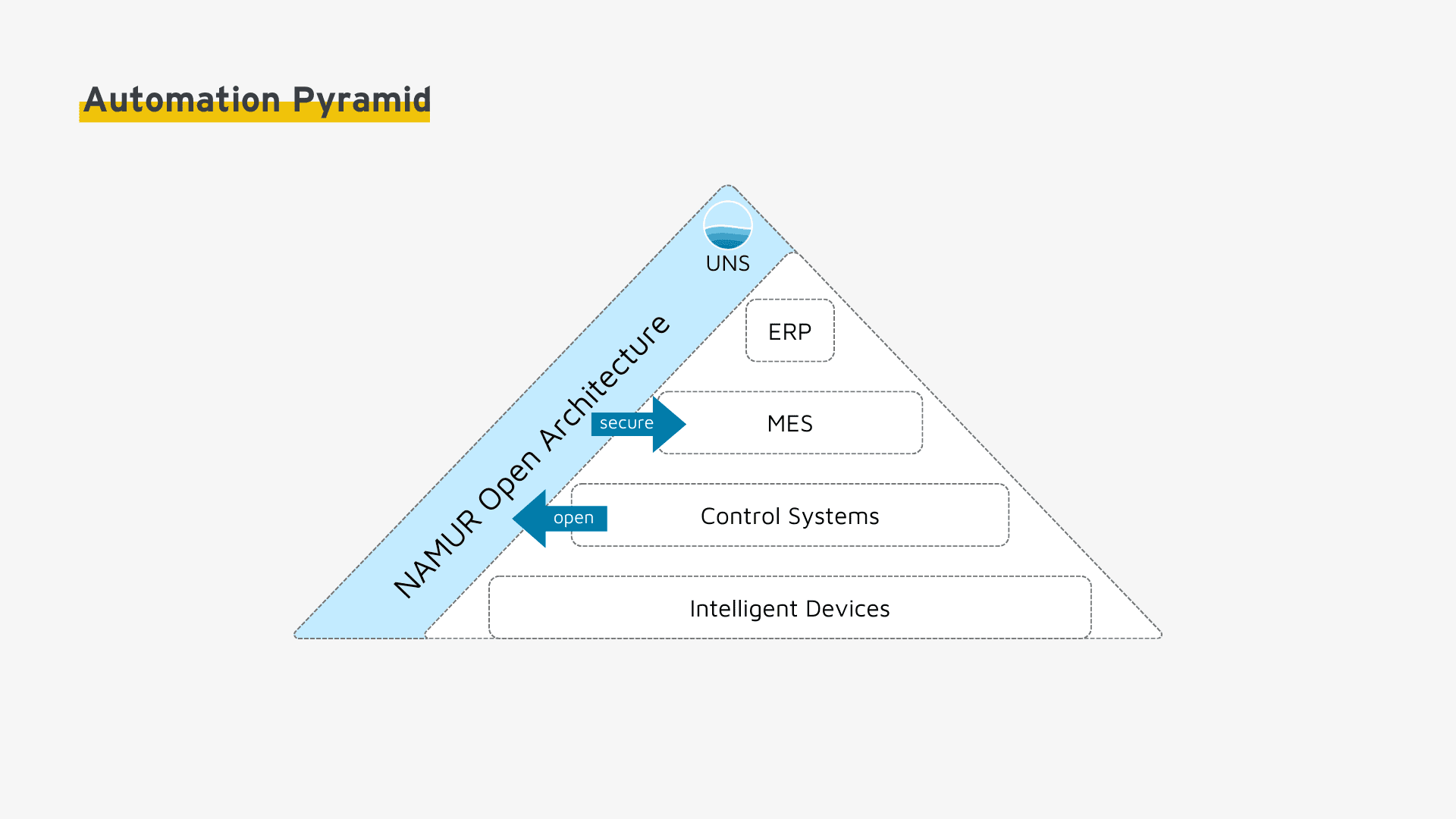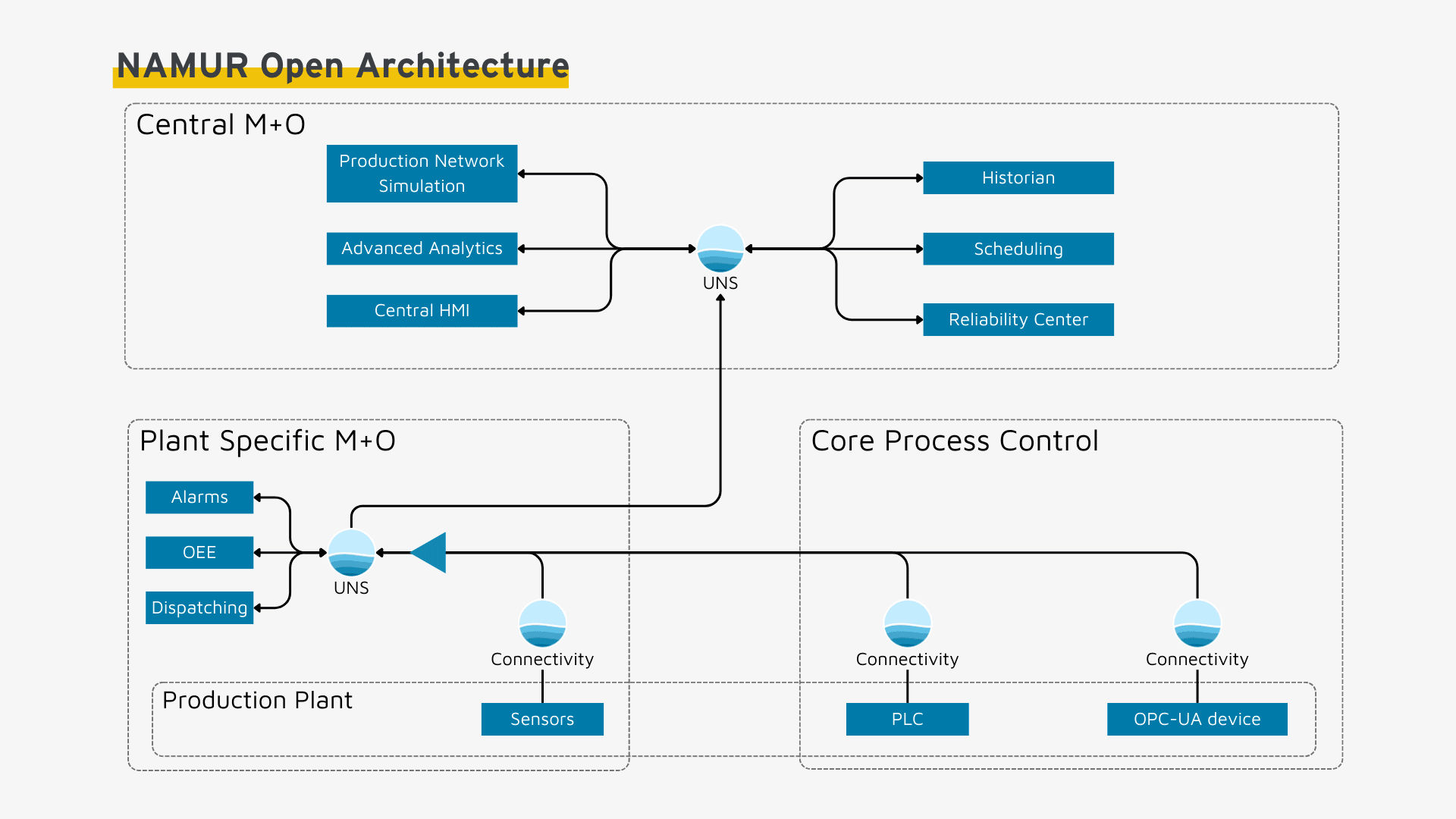The digital process industry of the future requires an interoperable, scalable and secure data architecture. One solution for this is the combination of a Unified Namespace (UNS) and the NAMUR Open Architecture (NOA). This article describes the potential for this and a reference architecture in which a Unified Namespace (UNS) complements the NAMUR Open Architecture (NOA) in a modern way.
Namur Open Architecture (NOA) as the key to Industry 4.0
The NAMUR Open Architecture (NOA) revolutionizes the traditional automation pyramid by adding a second data channel. This channel is separate from the core control system and thus prevents it from being disrupted by overload from Industry 4.0 use cases (source). NAMUR Open Architecture (NOA) breaks up the classic hierarchy and realizes more flexible, efficient data processing, which is particularly important for advanced analyses (e.g. advanced analytics).
Specifically, NAMUR Open Architecture (NOA) describes two main areas: the Core Process Control (CPC) area and the Monitoring and Optimization (M+O) area. The CPC area is the traditional process control system. The M+O division focuses on Industry 4.0 tasks, which are divided into system-specific and central functions. The system-specific functions are located on site in each system. The central functions are linked to the system-specific functions and aggregate the data in one place. This is usually done in a cloud as a broker.
The Unified Namespace (UNS) as a NAMUR Open Architecture (NOA) Broker
NAMUR requires a “highly reliable IT infrastructure” for the exchange of data. NAMUR proposes a system-specific OPC UA server and a central cloud application as examples. In contrast, we suggest using a Unified Namespace (UNS) for both. The advantages of a UNS (interoperability, event-based, scalable) can be used for the process industry (see UNS basics). In the Unified Namespace (UNS), data from all levels of the automation pyramid (PLC, MES, ERP) is published in standardized form in accordance with NAMUR Open Architecture (NOA) and made accessible to all users. This architecture therefore has two major advantages:
- Scaling: UNS can be easily expanded. In particular, the modular structure of the NOA makes it easy to connect several devices to one UNS. Reused information models such as PA-DIM are particularly helpful in the brownfield.
- Security: The second channel used separates the critical functions of the core control, while simultaneously providing all levels for the UNS. To this end, it transmits information on a diode basis – i.e. unidirectionally – and thus protects the production-critical functions.
Figure 2 shows an exemplary implementation of this concept. I-flow is used at all levels:
- Connectivity using NOA information models (e.g. PA DIM): As a connectivity layer, I-flow integrates systems of all levels using standardized information models such as PA-DIM and thus enables interoperable data availability.
- UNS in the M+O layer: An i-flow UNS integrates the data standardized by NOA in the maintenance and optimization layers (M+O). The i-flow UNS provides efficient data processing and utilization for all users, centrally and system-specifically.
Conclusion
The implementation of the UNS in NOA described here is not as disruptive as the UNS was originally intended, but offers an implementation adapted for the process industry. Together, NOA and UNS offer a powerful solution for improving data integration and utilization in the process industry. The UNS is a concrete implementation of the required standard (NAMUR Open Architecture) in a modern way. NOA provides the basis for this implementation by offering open standards, secure data transfer and information models. This combination leads to improved data availability and interoperability, enabling the process industry to successfully master the challenges of digital transformation.



